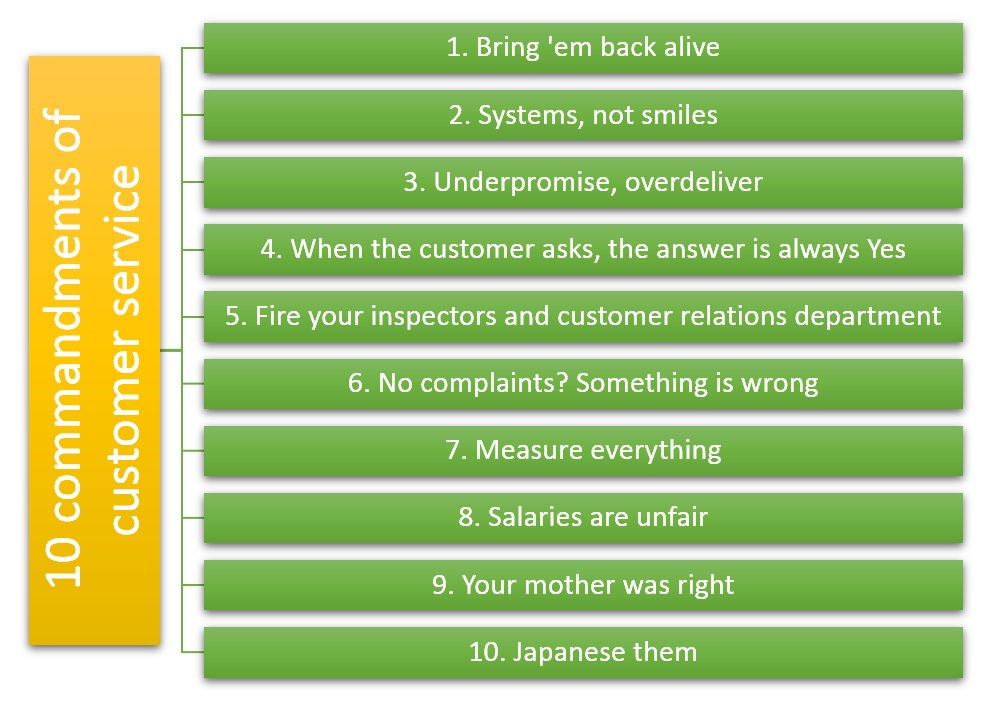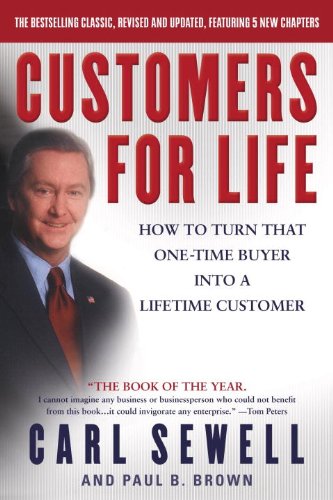The book Customers for Life: How to Turn That One-Time Buyer Into a Lifetime Customer explains the advantages of creating an effective customer service system. Carl Sewell and Paul Brown believe that implementing such a system in your business will help to increase profits several times because converting casual customers into lifetime customers gives several advantages.
Carl Sewell is an American entrepreneur, owner of a car dealership, and creator of a unique system for attracting and retaining customers, which helped him increase the profit in his business several times.
Paul Brown is a writer, newspaper employee for the New York Times and has written several books under his name and co-authored with other writers.
Converting casual customers into lifetime customers gives several advantages
- Lifetime customers buy your product or service much faster, it is much easier to sell them because they already know you and you know them, their needs and desires. This significantly reduces marketing costs.
- Lifetime customers are loyal to your prices because it is easier for them to pay a little more than to spend their time searching for a new and unknown company.
- Lifetime customers will find it easier to buy from you and your other products because you have already won their trust.
Before you start creating customer support and retention system, Carl Sewell and Paul Brown recommend that you meet the following conditions:
- Set a goal to be number one in your business
- Don’t stop at partial improvements
- Don’t promise customers impossible
- Remember that people buy not only the product but also the solution to their problems
To build an effective customer service system, Carl Sewell and Paul Brown describe ten commandments.
Ten Commandments
Bring ‘em back alive
Ask your customers what they want and give it to them again and again. The most common mistake is that you think you know what buyers want. Don’t think for them. To find out the client’s opinion, the authors recommend using the following tools: short questionnaire (3-question card), long questionnaire (49-question form), focus groups.
Systems, not smiles
Just because you say “please” and “thank” to your customers does not guarantee that you are doing the job correctly. The authors recommend introducing a system approach to your business. Once you have developed the system, check each block for errors, and then fix them. After implementing the system approach, it is necessary to organize constant monitoring of it.
Underpromise, overdeliver
Customers expect you to keep your promise. The authors advise you to exceed the expectations of consumers and do more than promised. To do this, first add a few percents on top, so that you can then ask for less.
When the customer asks, the answer is always Yes
When a customer asks for something that is related to your product or service, you should be prepared to say Yes. The authors advise you to be agile, even if you do not yet know how to fulfill the customer’s wishes.

Fire your inspectors and customer relations department
Every employee who communicates with clients in the company should have the authority to deal with complaints and solve problems. Quality inspectors often make performers careless, because the staff no longer feel responsible for their work. The authors believe that customer service is too important a business segment to leave it to the customer relations department. Everyone should take care of them because the quality of service is judged by everyone with whom the client has to communicate.
No complaints? Something’s wrong
The authors believe that every problem and complaint is a lesson from which to draw the right conclusions, and this is the value of criticism. Carl Sewell and Paul Brown suggest making it easy for the customer to complain. If the consumer is not given this opportunity, they will not feel their value to the company and in most cases will go to competitors. Always encourage your customers to talk to you about what you are doing wrong. There are three key actions for dealing with complaints: admit the error, offer a sincere apology, and resolve the issue immediately.
But the authors also say that the client is not always right, it all depends on the amount of money and the fairness of the claims.
Measure everything
A good way to understand what else can be improved in a company is to measure everything possible, including the CEO’s performance. Study the dynamics within the company and compare them with data from across the industry. Measurements must be honest, based on facts. The authors advise that as soon as you reach your goals, you need to set new, higher ones because if you do not constantly improve, your competitors will overtake you.
Salaries are unfair
Carl Sewell and Paul Brown say that if employees are paid more than their competitors, they will be proud of their company. Pay your employees as partners. Don’t change the rules if the seller started earning too much. Do not look for an opportunity to save on its earnings, since it increases your profit.
Your mother was right
Respect and politeness towards the customer is the desire to save them from problems and make their visit as pleasant as possible. If you manage to simplify his life — you will gain value in his eyes. For employees to be polite to customers, managers must be polite to subordinates. You can’t expect good service from your people if you treat them badly yourself.
Japanize them
Borrow ideas and improve them. The best practices are always copied by competitors, so implement them in your business and then constantly improve.

The authors provide some recommendations
- Set high goals and raise the bar as you reach them.
- Generate new ideas constantly and improve existing ones.
- Test periodically each business process and function for improvement.
- Conduct test purchases at competitors to identify best practices that can be copied.
- Ask what your competitors think about your business system and innovations in working with clients.
- Invite consultants to learn about the approaches and ideas of other companies, including those from other industries.
Carl Sewell and Paul Brown warn that all these commandments and tips are worthless if they don’t make a profit for your business.
Although the book deals with the automotive market, most of the techniques shown can be implemented for any business to achieve truly high profitability.
And always remember that it is very important for the profitability of your business that the customer who made a purchase from you or used your service returns to you.
Read more marketing and sales Book Reviews in the special section of the website.





